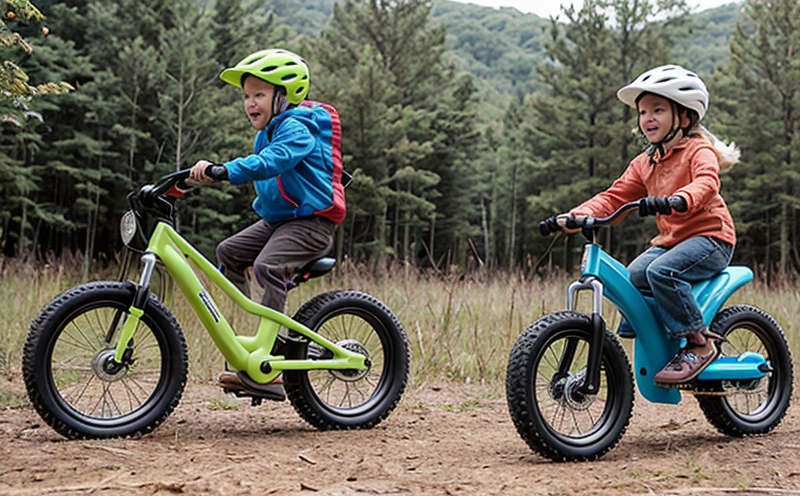ISO 8124-1 Mechanical Safety Evaluation of Ride-on Equipment
The ISO 8124 series is a set of international standards that provide requirements for the safety of toys, including ride-on equipment. Specifically, ISO 8124-1 focuses on mechanical and physical properties to ensure that toys are safe for children up to age 36 months. This service covers the evaluation of ride-on toy and outdoor equipment focusing on mechanical safety.
The mechanical safety evaluation is crucial to prevent potential hazards such as sharp edges, protrusions, or small parts that could cause injury to young children who may come into contact with these toys while playing. Ride-on equipment like bicycles, scooters, tricycles, and other similar devices often have complex components which can present various risks.
The evaluation process begins by identifying the potential hazards associated with each component of the ride-on toy or outdoor equipment. This includes examining parts that could become loose over time due to wear and tear or improper assembly. Safety factors such as stability under different conditions, impact resistance, and strength against repeated use are also evaluated.
During testing, specimens undergo rigorous procedures designed to replicate real-world usage scenarios. For instance, materials used in construction must withstand high-impact impacts without failing, ensuring durability even after multiple uses by children. Additionally, the evaluation tests for sharp edges or points that could cut or puncture skin if a child were to come into contact with them.
Once all evaluations are completed, detailed reports are prepared outlining any deficiencies found during testing along with recommendations on how to address these issues. These reports serve as valuable resources not only for manufacturers but also regulatory bodies responsible for enforcing safety standards across the industry.
Why It Matters
Safety is paramount when it comes to children’s products, especially toys and ride-on equipment. By adhering strictly to ISO 8124-1 guidelines, manufacturers can ensure their products meet international safety standards, thereby protecting young users from injuries caused by mechanical hazards.
- Reduces the risk of accidents or injuries resulting from improper design or manufacturing practices.
- Enhances brand reputation and consumer trust through consistent adherence to high-quality product development processes.
- Aids in compliance with local regulations, reducing legal risks associated with non-compliance.
The mechanical safety evaluation of ride-on toys is essential not only for protecting the health and well-being of children but also for fostering a culture of responsible manufacturing practices within the industry. It encourages continuous improvement in product design to better serve customers while maintaining stringent quality control measures throughout production cycles.
Scope and Methodology
The scope encompasses all aspects related to mechanical safety, including but not limited to:
- Evaluation of materials used in construction for durability against wear and tear.
- Testing stability under various conditions such as inclines or declines.
- Evaluating impact resistance through simulated drops from heights typical during playtime activities.
- Checking for sharp edges, points, or protrusions that could pose a risk to users.
The methodology involves detailed inspections using specialized equipment calibrated according to ISO 8124-1 specifications. This ensures accurate measurements and reliable data collection necessary for comprehensive analysis of each specimen's mechanical properties.
Testing procedures follow internationally recognized standards like ISO 8124-1, which provide clear guidelines on what constitutes acceptable levels of safety based on age groupings. Compliance with these stringent requirements guarantees that products meet or exceed industry expectations regarding mechanical integrity and child safety.





